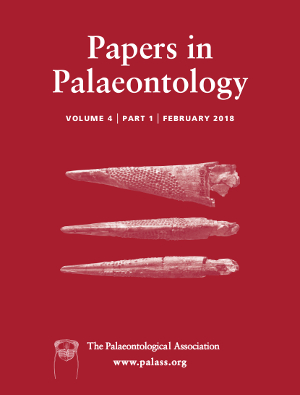Reg. Charity No. 1168330

The genus Aladraco nom. nov. is described and discussed, along with two species recognized from coeval strata of the lower traditional middle Cambrian, A. schloppensis (Wurm) from the Tannenknock Formation of the Franconian Forest region, Germany, and A. ougnatensis sp. nov. from the Jbel Wawrmast Formation of the eastern Anti‐Atlas, Morocco. Aladraco was formerly known as Oxyprymna Kiderlen, a preoccupied generic name requiring renaming of the genus. The genus bears morphological characters such as the size, shape and external ornamentation of the conch which clearly indicate a systematic position in the class Hyolitha. A number of characters, such as a tripartition into an axial chamber and lateral acuminate processes, and the course of the apertural margin, differ considerably from those seen in the two orders Hyolithida and Orthothecida, and appear to indicate distinct differences in functional morphology. However, similarities of the morphological characters with the known representatives of the Hyolithida suggest that the species are derived from this systematic group and should be dealt with as a hitherto unrecognized distinct suborder and family, introduced as Aladracina subord. nov. and Aladracidae fam. nov.